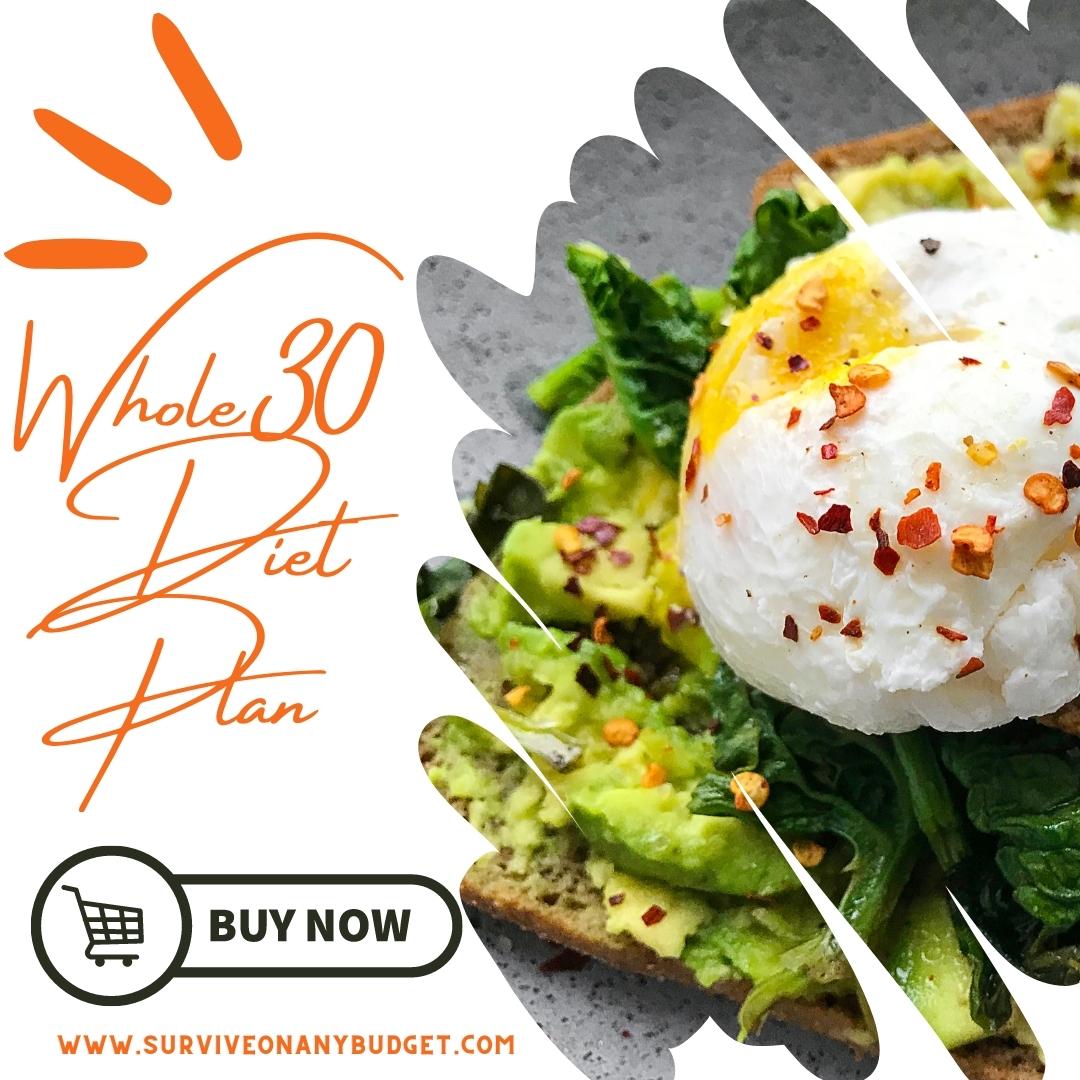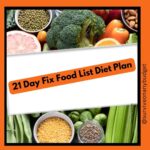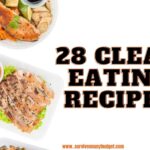For a good reason, the Whole30 diet has been gaining popularity over the past few years. This 30-day program is designed to help you reset your body and break any unhealthy habits you may have developed.
One of the keys to success on the Whole30 diet is knowing what foods you can and cannot eat. This can be a bit tricky, as there are a lot of gray areas when it comes to food choices.
To help you out, we’ve put together a comprehensive guide to the Whole30 diet food list. This guide includes approved proteins and vegetables, off-limit ingredients, and snacks. By following this list, you’ll be well on your way to completing a successful Whole30 diet!
What is the Whole30 Diet, and why is it gaining popularity?
The Whole30 Diet is a 30-day meal plan that eliminates certain food groups, including sugar, grains, dairy, legumes, and alcohol. The diet is based on the premise that these foods can cause inflammation in the body and lead to various health problems. Therefore, the goal of the diet is to help people identify and avoid these inflammatory foods to improve their physical and emotional benefits.
The Whole30 Diet has recently gained popularity due to its potential health benefits. Many people who have followed the diet report feeling more energetic and having better digestion. Some even say they have experienced weight loss as a result of following the diet. While more research is needed to confirm these claims, the Whole30 Diet provides an exciting option for those looking to improve their health and well-being.
What are the whole 30 diet rules?
The Whole30 is a month-long diet that emphasizes whole, unprocessed foods. The program lays out specific guidelines for what you can and cannot eat and what you should and should not do to reset your body and habits.
Whole30 eliminates all forms of natural sugar, honey, artificial such as maple syrup, agave nectar, alcohol, grains, legumes, dairy, and additives from your diet. That means no more cereal for breakfast, no more PB&J sandwiches for lunch, and no more ice cream for dessert.
Many different types of grains, wheat, rye, barley, beans, and legumes, can’t be consumed as part of a whole30 diet. These include gluten-free grains such as oats, corn, rice, millet, bulgur, sorghum, sprouted grains, quinoa, amaranth, and buckwheat.
Not only grains. Also, it can’t be consumed in any of the following forms: bran, germ, starch, beans, and legumes. Beans such as black, red, pinto, navy, garbanzo/chickpeas, white, kidney, lima, fava, cannellini, lentils, adzuki, mung, cranberry, and black-eyed peas, peanuts, and all types of soy products such as soy sauce, miso, tofu, tempeh, edamame, soy protein, soy milk, or soy lecithin
During the 30 days of Whole 30 food list, you are supposed to eat real food and three meals per day with no snacks in between. Meals should consist of protein (meat, fish, eggs), vegetables (leafy greens, cruciferous veggies), and healthy fats (avocados, olive oil).
This can be a major adjustment if you’re used to eating many processed foods or takeout meals. But the goal is to change your relationship with whole foods to eat for health instead of convenience or pleasure.
Whole30 diet has a lot of advantages. Some of them are:
- It helps in losing weight and improving overall health.
- It teaches you how to make healthier food choices and portion sizes.
- It eliminates processed foods from your diet and allows you to eat more nutrient-rich whole foods, which are more vitamins, minerals, and antioxidants.
- It can help improve energy levels, sleep quality, mood, skin health, digestion, and unhealthy cravings or dependencies you may have on certain foods.
Disadvantages of Whole30 Food List Diet:
- Limited certain foods choice – The Whole30 diet eliminates all processed foods, grains, dairy, legumes, and alcohol. In the long term, this can make it difficult to find foods that fit into the diet and lead to feelings of deprivation.
- Time-consuming – Preparing all of your meals from scratch can be time-consuming and may not be realistic for beginner cooks and busy people.
- Can be expensive – Buying all organic, grass-fed, and free-range foods can add up quickly and may not be affordable for everyone.
- Requires willpower – Sticking to the strict rules of the diet requires a lot of self-control and may not be possible for everyone.
- May was not sustainable – The restrictive nature of the diet may make it difficult to maintain in the long term.
The Whole30 Diet Food List: What are the essential foods to include in your diet for success?
The Whole30 Diet Food List is a great way to jumpstart healthy eating habits. The list includes whole, unprocessed foods packed with nutrient-dense foods that will help you reach your weight loss goals. Here are the essential foods to include in your diet for success:
Fruits:

- Apples – red, green, yellow
- Bananas
- Blackberries
- Blueberries
- Cherries – red, black
- Grapes – red, green, purple
- Kiwi
- Lemons
- Limes
- Oranges
- Pineapple
- Raspberries
- Strawberries
- Avocados
Vegetables:

- Arugula
- Asparagus
- Beets
- Bell Peppers
- Bok Choy
- Broccoli/Broccolini
- Brussels sprouts
- Buttercup squash
- Butternut squash
- Cabbage
- Carrots
- Cauliflower
- Collard
- Garlic
- Ginger
- Kale
- Leeks
- Lettuce
- Mustard Greens
- Onion/shallots
- Parsley
- Radish
- Rhubarb
- Rutabaga
- Spinach
- Summer Squash
- Sweet Potato/yams
- Swiss chard
- Tomato
- Turnip
- Watercress
- Zucchini
All the above whole30 foods lists will help keep you full and satisfied throughout the day.
Protein: Choose lean protein sources like

- Eggs
- Chicken
- Fish
- Meat
These will help you maintain muscle mass as you lose weight.
Healthy fats: Include healthy fats in your diet like

- Animal fat
- Olives
- Coconut oil
- Avocados
- Almonds
- Almond butter
- Almond milk
- Cashews
- Flax seeds
- Chia seeds
- Walnuts
- Pumpkin seeds
- Nuts and seeds oil
- Clarified butter
These will help promote satiety and prevent cravings.
Planning Your Whole30 Diet Meals: How to make sure you’re getting all the nutrients you need while following the diet.
The Whole30 diet is a great way to improve your health and reset your eating habits. However, it is important to ensure you get all the nutrients you need while following the diet. Here are a few tips to help you plan your Whole30 diet meals:
1. Make sure you include a variety of nutrient-rich foods in your meals. This includes lean protein, healthy fats, vegetables, and fruit.
2. Incorporate plenty of natural fats into your meals. This will help you feel satiated and help with nutrient absorption.
3. Make sure you’re drinking enough water throughout the day. This will help keep you hydrated and help your body responds properly.
4. Avoid processed foods, sugars, artificial sweeteners, alcohol, and grains during the eat on Whole30 diet. These foods can sabotage your efforts and lead to unhealthy cravings.
5. Plan ahead and prep some of your meals in advance. This will make it easier to stick to the diet and avoid temptation.
6. Get plenty of sleep. This will help to reduce stress levels and may help to reduce cravings as well.
7. Find a support group or friend who is also doing the Whole30 Diet. This can help you stay accountable and motivated when cravings strike.
Following these tips will help you make the most of your Whole30 diet and ensure you get all the nutrients you need.
You’re probably considering starting the Whole30 diet plan if you’re reading this. Congratulations and welcome! This will be a game-changer for your health, relationship with real food, and life.
If you’re looking to jumpstart your healthy eating journey today, our whole30 food list diet meal plan is a great place to start. Our meal plan includes nutrient-rich, tasty recipes to help you feel your best. In addition, our meal plan is designed to help you lose weight and improve your overall health.
Here are some of the many health benefits of purchasing our Whole30 food list diet plan:

1. It provides clear, concise, and delicious recipes, guides, and tools to maximize the support of your whole30 food list diet plan.
2. It helps you to stick to your goals by providing a structure and plan for breakfast, lunch, dinner, and snacks to follow the whole30 food list.
3. The results of following the Whole30 food list meal planning are worth it, with many people reporting weight loss, increased energy levels, and improved digestion.
So, what are you waiting for? Feel better tomorrow with our free 7-day trial of the whole30 food list diet plan.
Sources:
https://academic.oup.com/cdn/article/3/Supplement_1/nzz051.P04-169-19/5517679
https://www.sciencedirect.com/science/article/abs/pii/027869159500024V
https://www.tandfonline.com/doi/abs/10.1080/09637480120092071
https://academic.oup.com/advances/article-abstract/6/3/309S/4568629




